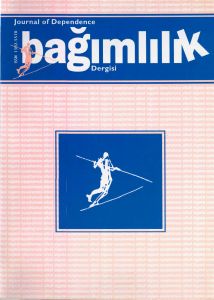Properties of callers who called a telephone information hot line for problems related with alcohol and other drugs and efficiency of the line
Keywords:
Alcohol, drug, telephoneAbstract
Object: This study is designed to determine the sociodemographic properties of people who called the AMATEM Substance Abuse Information Hot Line in 1999.Their reasons to call and the productivity of the line is also evaluated.
Method: Information about the people who called the line in 1999 was collected through 15 item questionnaire. Obtained data was evaluated by SPSS.
Results: 3303 people called the line in 1999 and the information gathered is as follow: 31.2% of the callers
were using any substance and 61.8 % declared him/herself as a relative or a friend. 65.7% of callers asked information about alcohol while 17% cannabis, 15% heroin, 10% pharmaceutical medicine, 7.5% volatiles, 6.5% cigarettes, 5.6% cocaine and 13.8% asked information on more than one substance. 76.6% of the callers who were using any substance, declared that they have never been in treatment before.
Conclusion: Majority of the people who called this line were the relatives of substance users. This shows that those people are in need of information. It is remarkable that vast majority of drug abusers who called the line has never been in treatment before and information hot line has an impact on developing the treatment motivation and its effectiveness.
References
Platt, S., Tannahill, A., Watson, J., Fraser, E.; “Effectiveness of Antismoking Telephone Helpline: Follow up Survey”, BMJ 1997; 314: 1371.
Porter, L.S., Astacio, M., Sobong, L.C.; “Telephone Hotline Assessment and Counselling of Suicidal Miltary Service Veterans in the USA”, J Adv Nurs. 1997; 26 (4): 716722.
Sullivan, S.G.. McCormick, R., Sellman, J.D.; “Increased Requests for Help by Problem Gamblers: Data From a Gambling Crisis Telephone Hotline”, N. Z. Med J. 1997; 110 (1053); 380-383.
Waller. R.R., Lisella, L.W.; “National AIDS Hotline: HIV and AIDS Information Service Through a Tollfree Telephone System”, Public Health Rep. 1991; 106 (6): 628-6.34.
Harvey, R., Roques. P.K., Fox, N.C., Rossor, M.N.; “CANDID- Counselling and Diagnosis in Dementia: a National Telemedicine Service Supporting the Care of Younger Patients with Dementia”. Int. J Geriatr Psychiatry' 1998; 13 (6): 381-388.
Lynch. D.J.. Tamburrino, M.B., Nagel, R.; “Telephone Counseling for Patients with Minor Depression: Preliminary Findings in a Family Practice Setting”, J Fam Pract. 1997; 44 (3): 293-298.
Washton, A.M.. Gold, M.S.; "Recent Trends in Cocaine Abuse: a View From the National Hotline, 800-Cocaine”, Adv. Alcohol Subst Abuse 1986; 6 (2): 31-47.
Türkcan, A.; “Türkiye’de Madde Kullananların Profili: Hastane Verilerinin İncelenmesi". Düşünen Adam 1998; 11 (3): 56-64.
Türkcan, A., Çakmak, D.; “Uçucu Madde ve Alkol Kullananların Özellikleri: 1998 Yılı AMATEM Poliklinik Başvurularının İncelenmesi”, 35. Ulusal Psikiyatri Kongresi Özet Kitabı, Trabzon, 1999, 62.
Diclemente, C.C.; “Motivational interviewing and the stages of change.”, Motivational Interviewing (Preparing People to Change Addictive Behavior), WR. Miller, S. Rollnick, (Ed), New York, The Guilford Press, 1992. 190-202.
Hornblow, A.R.; “The Evolution and Effectiveness of Telephone Counseling Services", Hosp Community Psychiatry 1986; 37 (7): 731733.
Downloads
Published
Issue
Section
License
Copyright (c) 2025 Journal of Dependence

This work is licensed under a Creative Commons Attribution-NonCommercial-NoDerivatives 4.0 International License.
The Journal and content of this website is licensed under the terms of the Creative Commons Attribution-NonCommercial-NoDerivatives 4.0 International (CC BY-NC-ND 4.0) License. This is in accordance with the Budapest Open Access Initiative (BOAI) definition of open access. The Creative Commons Attribution-NonCommercial-NoDerivatives 4.0 International (CC BY-NC-ND 4.0) allows users to copy, distribute and transmit unmodified article, and make noncommercial use of the article. The CC BY license permits non-commercial re-use of an open access article, as long as the author is properly attributed.

